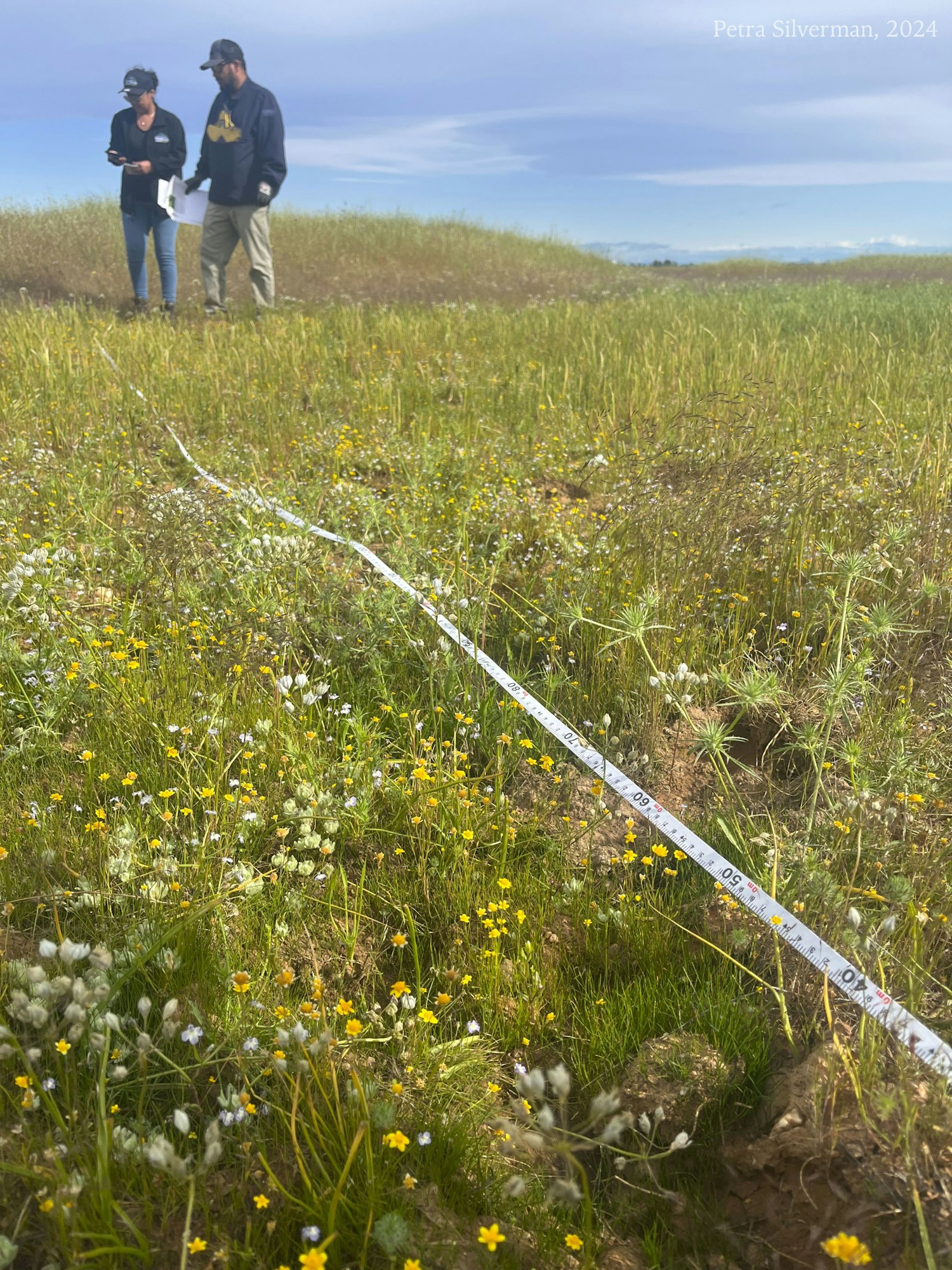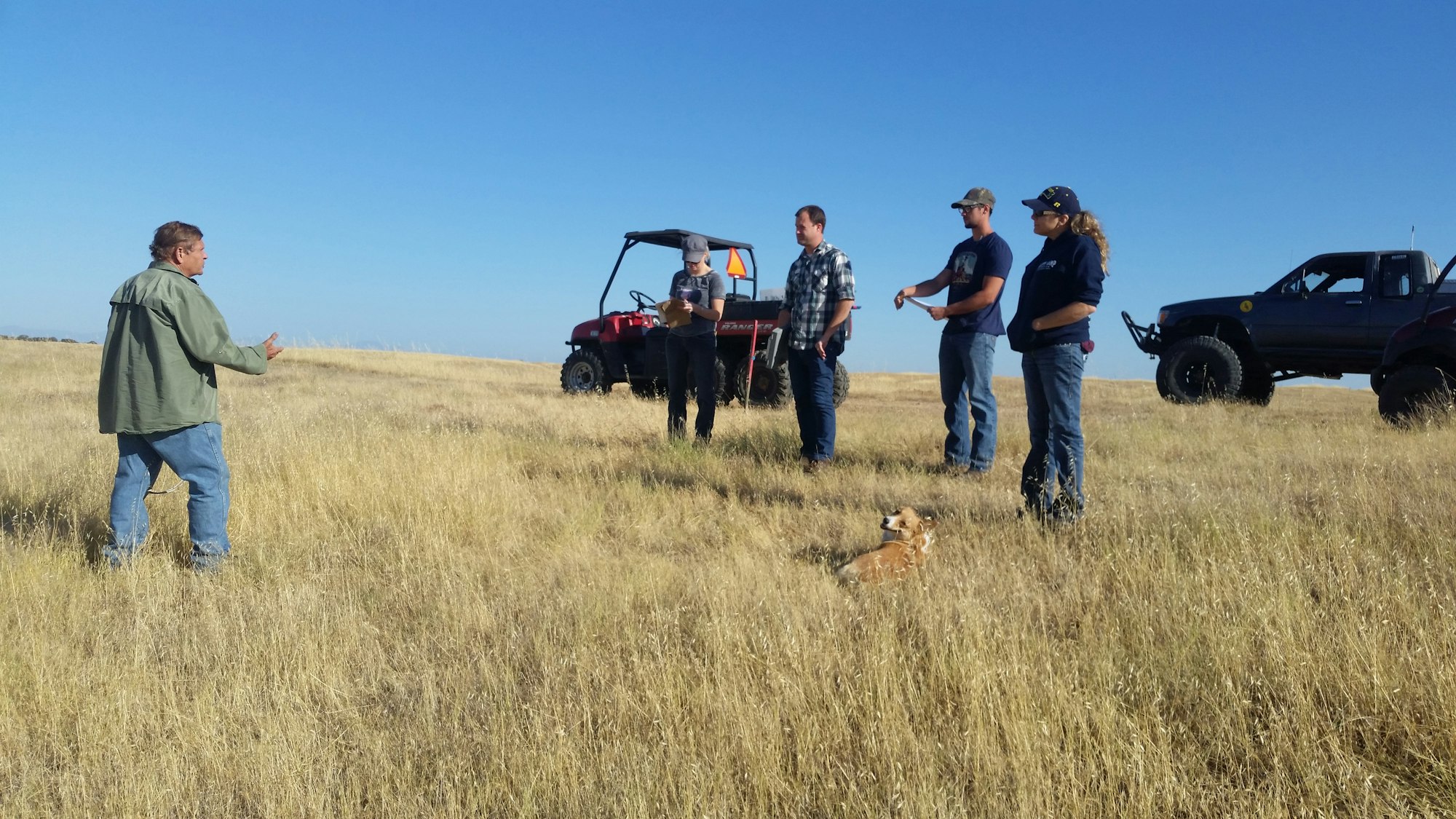Monitoring Projects
RCDTC personnel complete annual Residual Dry Matter (RDM) monitoring and biennial vernal pools monitoring in the Coyote Creek Conservation Area west of Red Bluff in order to monitor the influence of livestock on invasive species and soil health.






Vernal pools are a unique, ecologically important habitat in California. They are a type of temporary wetland specific to Mediterranean climate conditions, forming in depressions where there is a hard underground layer that prevents rainwater from seeping through. As the temperatures heat up, the water slowly evaporates away, drying up completely until the next fall/winter rains come. These wetlands range in size from small puddles to shallow lakes and are usually found in a gently sloping plain of grassland.
This extreme environment has allowed for specific plant and animals species to adapt to and depend on these specialized habitats. Many of the flowering plants, crustaceans, amphibians, and insect species that exist in these vernal pools are endemic to CA, meaning they only exist here and nowhere else. Namely, the endangered vernal pool fairy shrimp depend on this habitat (US EPA). These seasonal wetlands also provide crucial food resources for birds along the Pacific Flyway, a major migratory path for birds that extends from Alaska to Patagonia.

Unfortunately, it’s estimated that close to 90% of vernal pools have been lost due to the expansion of agriculture and human development in CA’s Central Valley (CDFW). As a type of wetland, vernal pools are protected by state and federal laws. In 2005, the U.S. Fish & Wildlife Service released its Recovery Plan for Vernal Pool Ecosystems of California and southern Oregon. In accordance with this plan, we play our part in the biennial vernal pool monitoring where we place pre-designated transects across each vernal pool and collect detailed species composition data of both native and invasive plant species. By tracking the encroachment of invasive species and documenting the impact of grazing pressures, we are helping to ensure the continued health and persistence of these rare ecosystems.
Residual Dry Matter (RDM) is a standard used by land management agencies for assessing the level of grazing use on annual rangelands and associated savannas and woodlands (George et al. 1996). Residual dry matter is the old plant material left standing or on the ground at the beginning of a new growing season. It indicates the combined effects of the previous season’s forage production and its consumption by grazing animals of all types. Properly managed RDM can be expected to provide a high degree of protection from soil erosion and nutrient losses (Bartolome et al. 2002).

